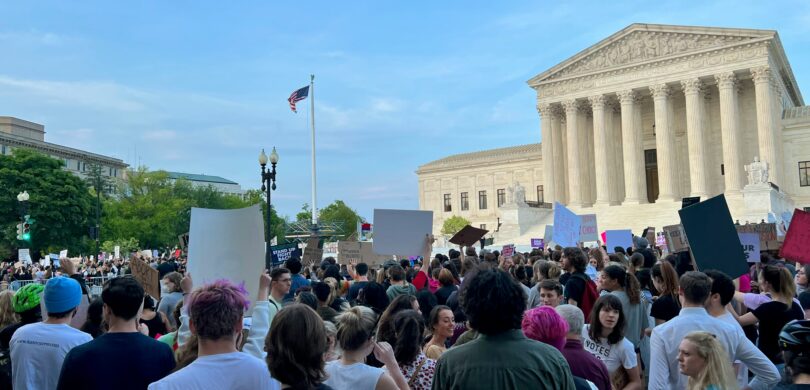Now that the 2024 election dust has settled, it’s time for nonprofit advocacy groups to look ahead. With the outcome decided at the top of the ticket and down-ballot, it’s crucial to think about what this means for your mission and how you’ll raise the funds you need to make an impact. Whether you’re advancing a policy agenda or defending against changes that could set things back, here’s how to get the ball rolling on your post-election fundraising.
1. Understanding the Election’s Impact on Your Mission
First things first, take stock of how the election results affect your work. Whether you’re a state-based group or focused on national issues, donors want to know how the outcome shifts your priorities. Be clear with donors and supporters about how the election results will impact your issues and the urgency it presents.
- If the new administration(s) aligns with your goals: Now’s the time to build on that momentum while you can. Tell your donors that, with their help, you can secure real wins in policy.
- If your organization faces challenges with new policies: Emphasize the urgency of keeping up the fight. Let donors know that without their support, important progress could be at risk.
Donors will be recalibrating their priorities too, so the more you can show how these changes impact your cause, the better. And remember, new donors might pop up that are looking to support organizations like yours that are working on policy issues you’ve been focusing on.
2. Craft Appeals That Highlight an Offensive or Defense Strategy
It’s helpful to be clear with supporters about whether your group is on the offense (pushing for new policies) or defense (protecting what’s already in place). Both strategies work, but they call for different tones:
- Playing Offense: Focus on the excitement and potential of creating change. Show donors that their support could lead to major wins and help shape a better future.
- Playing Defense: Here, you’re aiming to build urgency. Give a glimpse of what could happen without intervention and how their support is critical to keeping positive policies in place.
Making your strategy clear helps donors feel like they’re part of something purposeful and timely.
3. Tailor Your Approach for State-Based vs. National Advocacy
If you’re a state-based advocacy group, you’ll likely have different fundraising needs and goals than a national organization. Tailoring your approach can make a real difference:
- State-Based Groups: Lean into the local impact. Make it clear how state policies hit home for people in your community and why their involvement matters. Donors often feel more connected to causes that affect them locally, so put your impact front and center.
- National Groups: Focus on the bigger picture. Show how federal policy changes ripple across the country, and build a sense of unity around shared values. Working with partner organizations can also bring in supporters who might be less tied to local issues but still passionate about the broader cause.
4. Leverage Plural Policy to Amplify Your Goals
For advocacy groups, Plural Policy is a game-changer in navigating the post-election landscape. This platform allows you to track policy developments in real-time, connect with other organizations working toward similar goals, and identify decision-makers to engage for your cause. Here’s how Plural Policy can support your mission:
- Track Legislation: Plural’s tools let you monitor the status of key bills and policy updates that matter to your organization. This can help you adjust fundraising asks in real time based on new developments and create a more responsive, informed strategy.
- Coordinate With Allies: Plural Policy makes it easy to connect with like-minded groups and build coalitions, especially for issues that require a unified voice. This can boost your credibility, amplify your message, and bring in donors interested in seeing broad impact.
- Identify Key Decision-Makers: With Plural Policy’s decision-maker data, you can focus your advocacy on the people and offices that matter most. Show donors that their support enables you to reach the right influencers and build relationships that will move the needle.
Using Plural Policy isn’t just about staying informed; it’s a powerful way to drive results and keep donors engaged with relevant, timely actions.
5. Re-Engage Supporters With Post-Election Updates
After an election, people are tuned into political outcomes and ready to get involved. Use this time to re-engage your donor base. Send personalized thank-you emails, share an updated mission statement, and lay out specific plans for the coming year. Show them how their past support has made an impact, and outline what’s next with their continued help.
6. Go Digital With Social Campaigns and Peer-to-Peer Fundraising
Digital campaigns are where it’s at. Launch targeted emails and social media posts to reach supporters where they’re already spending time. Encourage people to set up peer-to-peer fundraisers, which can bring in new donors through personal networks and expand your reach without extra cost.
The post-election season is a prime opportunity to fundraise and set the stage for the coming year. Whether you’re on the offense or defense, your strategy should lay out your group’s focus, connect with supporters’ values, and use this unique moment to build support. By adjusting your tactics based on whether you’re a state-based or national group—and by leveraging tools like Plural Policy—you’ll be well-positioned to make the most of this pivotal time. To talk to one of our policy experts, contact us today.
